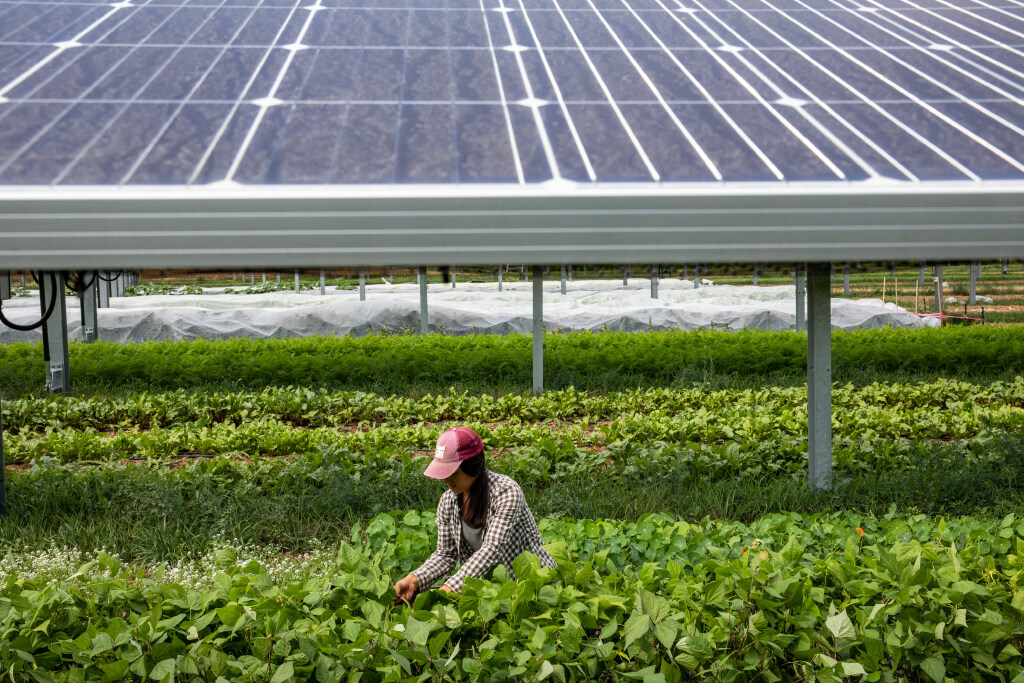Imagine transforming your farming operations into a powerhouse of efficiency and sustainability. That’s exactly what you can achieve by integrating solar power with smart farming devices.
As a forward-thinking farmer or agricultural enthusiast, you’re always on the lookout for ways to enhance productivity while reducing costs and environmental impact. This powerful combination offers you the chance to harness the sun’s energy to fuel the cutting-edge technology that drives your farm.
By reading on, you’ll discover how this integration not only boosts your farm’s performance but also aligns with the growing demand for eco-friendly practices. Are you ready to revolutionize your approach and lead the way in modern agriculture? Let’s dive into how solar power and smart farming devices can change the game for you.
Benefits Of Solar-powered Smart Farming
Integrating solar power with smart farming devices offers numerous advantages. This combination enhances agricultural efficiency and sustainability. Farmers can reduce costs and reliance on traditional energy sources. Solar power provides a clean, renewable energy option. It supports various smart farming tools and technologies.
Energy Independence
Solar-powered systems enable farmers to generate their own electricity. This reduces dependency on external power sources. Farmers gain control over their energy needs. It ensures a reliable energy supply, even in remote areas.
Cost Savings
Solar energy helps cut down electricity bills significantly. Farmers can save money on energy expenses. Reduced costs lead to increased profitability. Solar panels have low maintenance and operational costs.
Environmental Benefits
Solar power is a clean energy source. It reduces carbon footprint and greenhouse gas emissions. Using solar energy supports environmental conservation. It promotes sustainable farming practices.
Increased Efficiency
Solar-powered devices ensure consistent energy supply. They optimize operations and reduce downtime. Smart devices can function seamlessly with solar energy. This improves overall farm productivity.
Enhanced Technological Integration
Solar energy supports advanced farming technologies. It powers sensors, drones, and automated systems. These technologies help monitor crops and soil conditions. They provide data for better decision-making.
Scalability And Flexibility
Solar-powered systems are easily scalable. Farmers can expand energy capacity as needed. They offer flexibility in energy management. This adaptability benefits various farm sizes and types.

Key Technologies In Solar Smart Farming
Integrating solar power with smart farming devices opens new possibilities for agriculture. Solar energy provides a sustainable and cost-effective solution. Farmers can use it to power devices that improve efficiency and productivity.
Smart farming technologies are evolving rapidly. Solar power enhances these technologies by offering renewable energy solutions. This synergy benefits both the environment and the economy.
Solar panels are a crucial component. They convert sunlight into electricity, powering various farm devices. These panels are durable and require minimal maintenance.
Smart Irrigation Systems
Smart irrigation systems optimize water usage. They rely on sensors to determine soil moisture levels. Solar power keeps these systems running smoothly.
Automated Drones
Drones assist in monitoring crops and livestock. Solar energy can charge drone batteries. This ensures they operate efficiently throughout the day.
Weather Stations
Weather stations collect data on temperature, humidity, and rainfall. Solar energy powers these stations, ensuring continuous data collection.
Remote Monitoring Devices
Remote monitoring devices track various farm activities. They provide real-time data. Solar power enables these devices to function without interruption.
Solar technology significantly impacts smart farming. It supports devices that enhance agricultural productivity. Farmers benefit from reduced energy costs and improved efficiency.
Challenges And Solutions
Integrating solar power with smart farming devices offers immense benefits. Yet, this fusion presents unique challenges that need addressing. Farmers often face hurdles with technology integration, energy storage, and initial costs. Understanding these challenges can help find effective solutions to boost efficiency and sustainability in agriculture.
Challenges Of Energy Storage
Solar energy depends on sunlight availability, which varies. Cloudy days and nighttime limit energy production. Reliable energy storage systems are necessary to ensure continuous power supply. Current battery technologies can be expensive and may have limited lifespan. This poses a significant challenge for farmers relying on solar-powered devices.
High Initial Costs
Setting up solar-powered smart farming systems requires substantial investment. Costs include solar panels, batteries, and smart devices. For many small-scale farmers, this financial burden is overwhelming. High initial costs can deter adoption of solar-powered farming solutions, affecting widespread implementation.
Technological Integration Issues
Integrating solar power with existing smart devices can be complex. Compatibility issues between solar systems and smart devices may arise. Farmers may need technical support, which isn’t always available. This can lead to inefficiencies and disrupted farming operations.
Solutions For Energy Storage
Investing in advanced battery technologies is essential. Lithium-ion batteries offer better performance and longer lifespan. Exploring alternative storage solutions, like thermal or mechanical storage, can also help. These options provide reliable energy supply, even during low sunlight periods.
Addressing Initial Costs
Government incentives and subsidies can reduce financial barriers. Many countries offer grants and loans for renewable energy projects. Farmers can benefit from these programs to offset initial costs. Collaboration with local cooperatives can also help share expenses and resources.
Improving Technological Integration
Training programs can equip farmers with necessary skills. Workshops and online courses can offer practical knowledge. Developing open-source platforms for device compatibility is crucial. This ensures smooth integration of solar power with smart farming devices.

Future Trends In Solar And Smart Agriculture
The fusion of solar power with smart farming is shaping agriculture’s future. This blend promises increased efficiency and sustainability. As technology evolves, the agriculture industry is witnessing transformative changes. Solar energy is becoming a vital component of this change. It offers a clean, renewable power source for various farming devices. Smart agriculture, on the other hand, uses technology to optimize farming practices. Together, they create a powerful synergy.
Future Trends In Solar-powered Smart Farming
Solar panels are now more affordable and efficient. Farmers can easily install them on fields or rooftops. These panels provide a reliable energy source for smart devices. Many farms are now adopting solar energy to power sensors, cameras, and automated systems. This trend reduces reliance on traditional energy sources.
Advancements In Smart Agriculture Technology
Smart farming devices are becoming more advanced and accessible. Drones, for instance, are used to monitor crop health. They can cover large areas quickly, providing real-time data. Sensors are also gaining popularity. They help monitor soil moisture and temperature. This data helps farmers make informed decisions.
Integration Of Iot In Farming Operations
The Internet of Things (IoT) is transforming agriculture. Devices can now communicate and share data seamlessly. This connectivity allows for better farm management. Farmers can monitor equipment and crops remotely. IoT enables real-time alerts for equipment malfunctions. This ensures timely maintenance and reduces downtime.
Automation And Robotics In Agriculture
Automation is becoming a key trend in farming. Robots can now perform tasks like planting and harvesting. This reduces labor costs and increases efficiency. Robots can work around the clock without breaks. They also reduce the margin for human error. Automation in agriculture promises increased productivity.
Sustainability And Environmental Impact
Solar energy reduces the carbon footprint of farms. It offers a clean and sustainable power source. Smart agriculture practices also promote sustainability. They help optimize resource use, reducing waste. This combination supports environmentally friendly farming practices.

Conclusion
Solar power and smart farming create a sustainable future together. Farmers reduce energy costs while boosting productivity. This combination supports eco-friendly agriculture. Using these technologies helps conserve resources and protect the environment. It’s an efficient way to manage farms. Smart devices monitor conditions, ensuring optimal growth.
Solar energy powers these devices, making farming operations smoother. The integration is vital for modern agriculture. A step forward in sustainable farming. Embrace this change for a greener planet. It’s a win-win for farmers and nature. Simple yet effective solutions for today’s challenges.
Let’s move towards a sustainable farming future.



